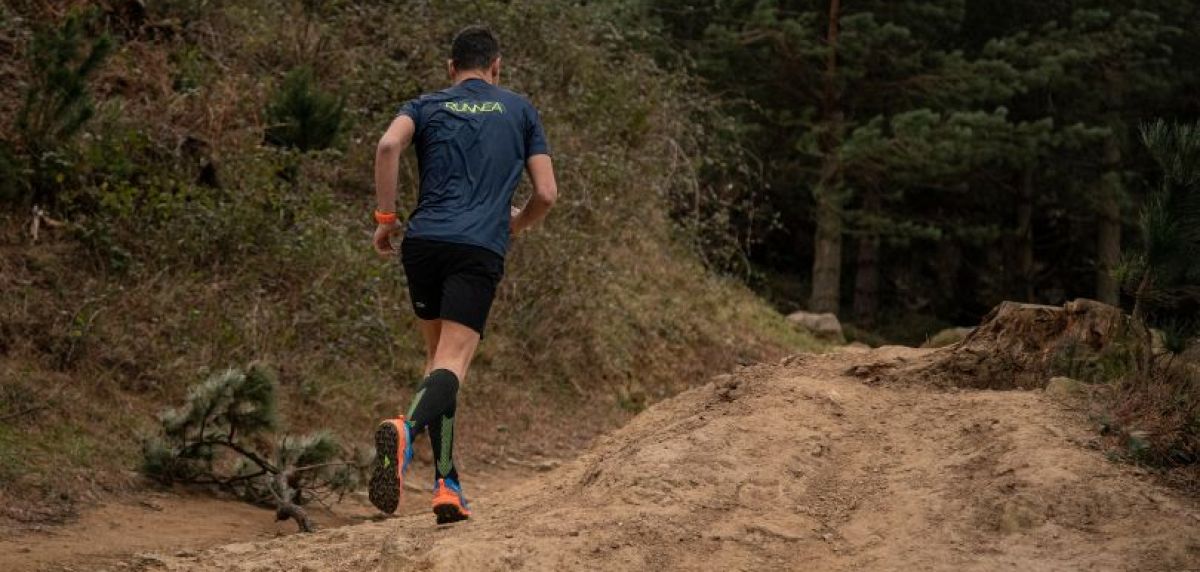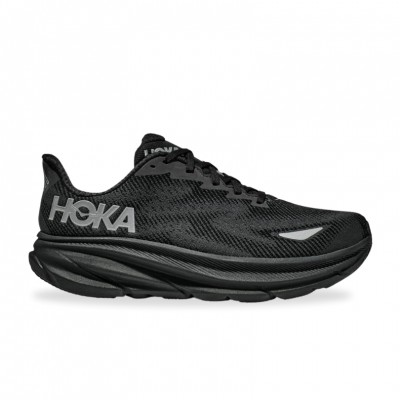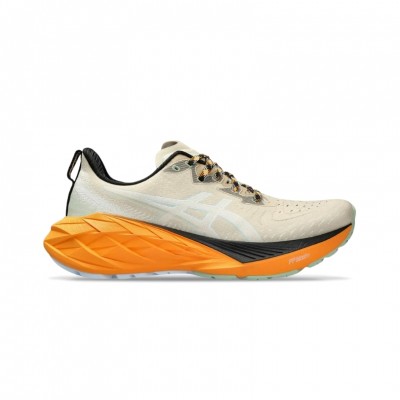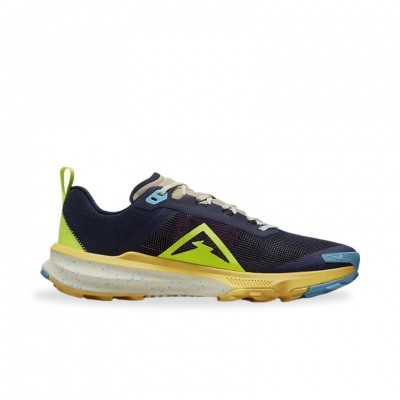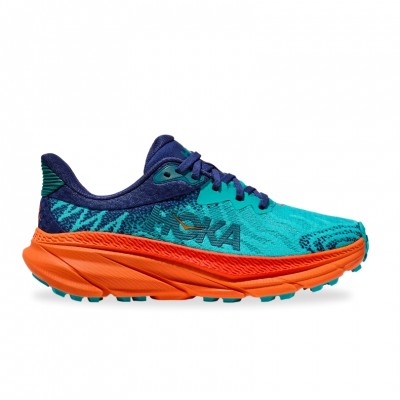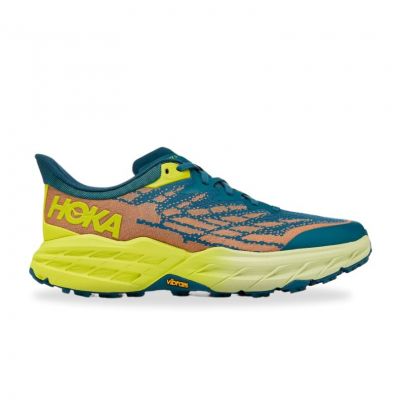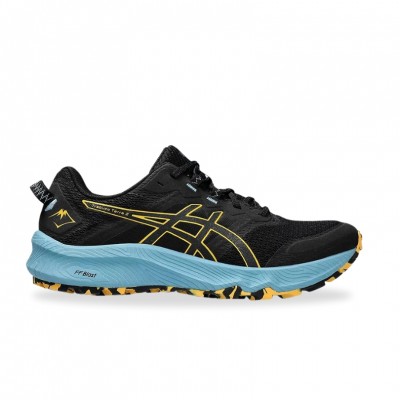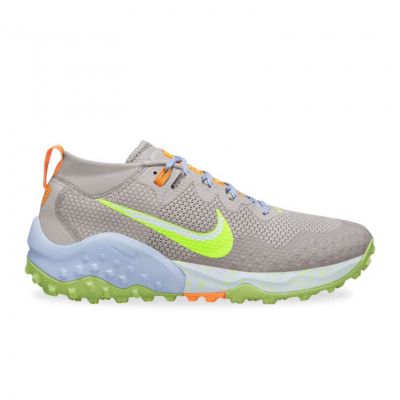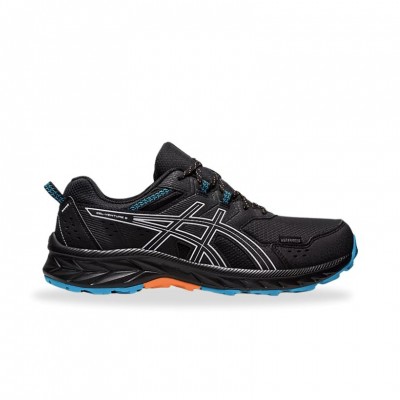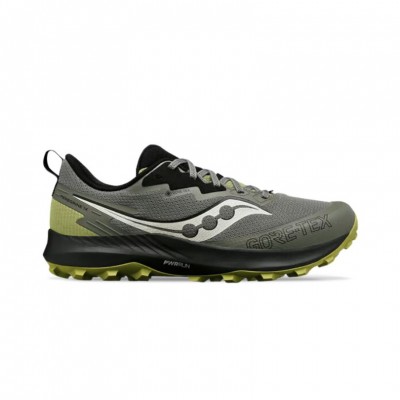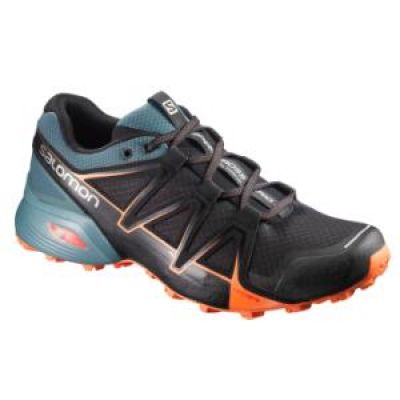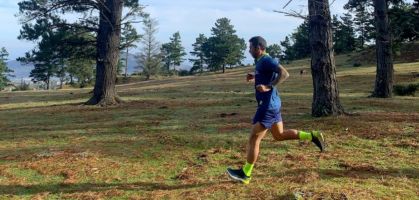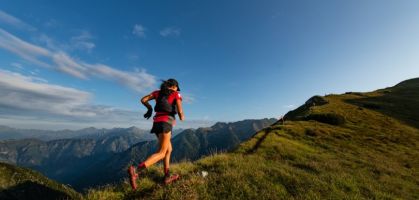Because of their nature, to consider running and trail running as two very similar sporting disciplines would be a very accurate statement. After all, they both consist of running and trying to cover a given distance in the shortest possible time in a competitive mode. It is also true that the physiological mechanisms available to the body work in a very similar way, so it is not surprising that many people are choosing to prioritize running in the mountains over running on asphalt.
Although they are considered very similar distances, not everything is the same. Putting on trail running shoes means, unlike running, entering a changing environment with greater uncertainty. The variety of surfaces, the technical complexity of the routes, the unevenness, the influence of the weather or the feeling of loneliness are just some of the aspects that we find different when we run in the mountains, so in addition to taking strides, it is important to consider a number of elements characteristic of the discipline.
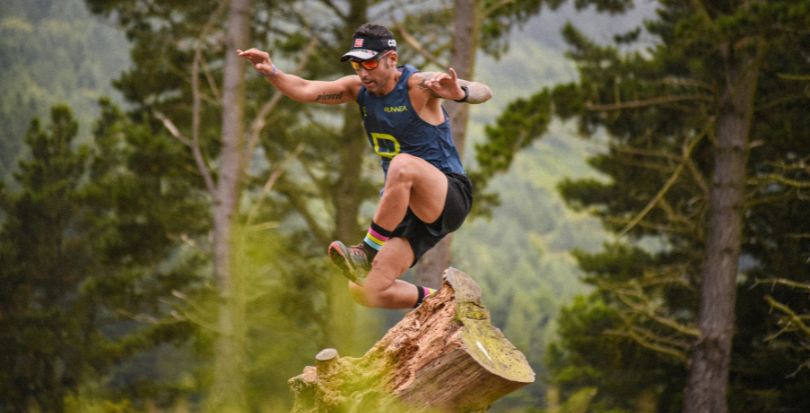
Therefore, our training plan should also consider certain factors that can determine performance in trail running. Here, at RUNNEA, we are going to provide you with 10 keys that your training plan should have in order to be a better mountain runner.
10 keys your trail running training plan should have
The following keys address, above all, the type of content to include in the training plan, as well as how to distribute the intensity in the weekly sessions. Shall we go with it?
Walking is no sin
The RUN WALK method, which consists of alternating periods of walking and running, should be an indispensable part of our training plan. Not only because there are certain times when the steepness of the slopes does not allow us to run, but also because it will be one of the best ways to work on low intensity when running in the mountains.
As it's logical, running on unstable surfaces and slopes will cause a greater energy expenditure which, among other things, will cause an increase in heart rate. If we insist on running all the time we are likely to significantly reduce the percentage of our weekly volume that should be dedicated to low intensity sessions. RUN WALK sessions of all distances are going to be very interesting, even in short sessions.
Trail running is often thought of as just running, but really knowing when to run and when to walk will help you train smarter and more efficiently.
Don't neglect high intensity
It is often believed that because the pace is slower in the mountains, training should be limited to running at slower speeds. Even more so when our goal is a middle, long or ultra distance trail race, where there is a belief that the most important thing is to accumulate time and kilometers of training. In part it is, but let's not fool ourselves.
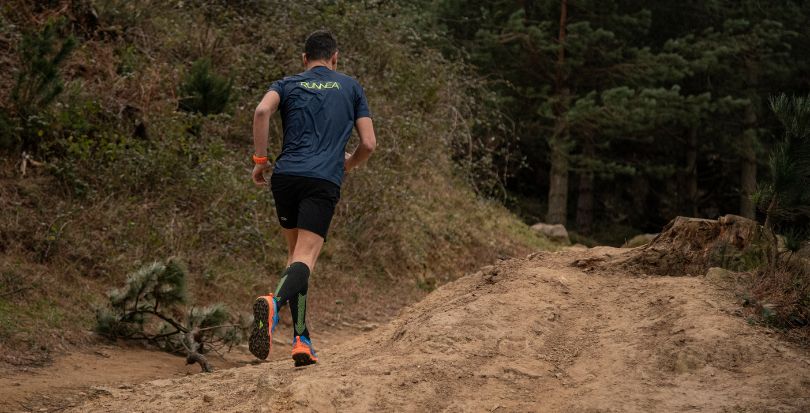
It is more than advisable not to neglect high intensity sessions, as they will help us to move and improve our physiological thresholds, which will allow us to be more economical when we have to run at lower paces. High intensity can be worked in a variety of ways, including sets, tempo changes or hills. Whatever the type of session, finding our limit while training will allow us to improve our performance and tolerance to effort.
Including at least one high intensity session per week should be a "must" in our training plan.
Specific hill sessions
One of the most distinctive features of mountain running is the greater presence of positive gradients, in the form of very aggressive slopes or very long climbs. Getting the body used to overcoming these types of areas is going to be very necessary, both in terms of effort tolerance and climbing technique. Let's not make the mistake of associating hill training only with short, high-intensity sets.
We can perform specific hill sessions on any terrain, length and gradient, both running and walking. Depending on what our competitive goal is, we should prioritize the type of sessions that most closely resembles what we will encounter in our next race. In the same way, we should consider the use of poles so that they can provide us with some help when climbing.
The descents are also trained
One of the great forgotten ones. As running downhill following the laws of gravity is quite easy, it is a type of session that we specifically skip. Although running on negative slopes is certainly done every time we go to the mountains, it is not enough. It should be worked on specifically for two reasons in particular.
First, because the type of muscle work that occurs in the descents is very specific, we speak of eccentric contractions, where the origin and insertion of our muscles away, causing a "stretch" that generates greater muscle fatigue and, sometimes, the presence of the much-feared stiffness. Second, because the instability of the terrain requires the acquisition of a descent technique that is as refined and natural as possible. Our joints, especially the ankle and knee, must adapt to the environment and become stronger. And this, too, can be trained and improved session after session.
There is no other way to improve joint stability than by exposing yourself to the specific environment.
running sessions on tarmac or track
The more purist trail runners are quite reluctant to train on asphalt, but the truth is that including running sessions in our training plan will bring us a number of benefits. On the one hand, it will help us to maintain the scheduled session in case we cannot go to the mountain or because the weather conditions are too adverse.
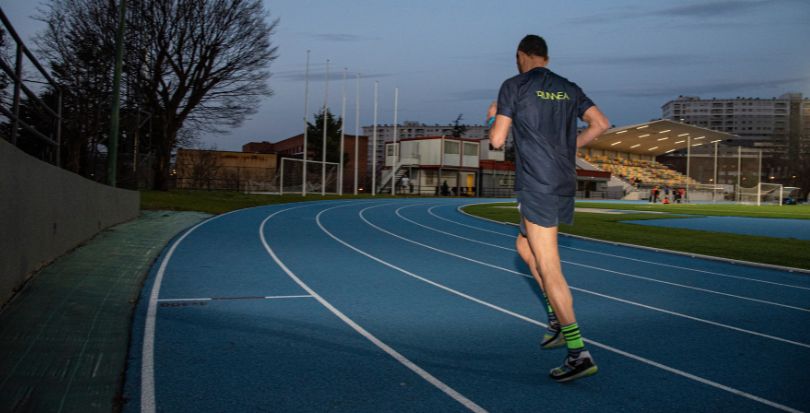
On the other hand, because the same feeling of effort will allow us to run faster, which will help us to accustom the body to run at higher paces, without requiring more work at the cardiovascular level. Finally, because it will also allow us to run faster at maximum and submaximal intensities, so including series sessions on asphalt or the running track will allow us to maximize our improvements.
Do you train strength?
Although the very act of running in the mountains, and especially running uphill, is considered a movement where high levels of strength are applied, it cannot be considered a specific strength workout. Running requires specific training applied to the discipline, which is achieved with certain content such as strength work with weights or plyometrics (jumps).
Strength training with loads (weight) both in the gym and at home will bring us a multitude of advantages when running in the mountains, making us much more efficient in the effort, in addition to preventing the occurrence of injuries that may force us to stop our plan.
Do not be afraid to move weight as long as you do it with the supervision or prescription of an expert in the field, it will help you a lot!
Learn how to manage your nutrition and hydration.
On average, mountain training sessions and competitions tend to last longer. For this reason, planning a nutrition and hydration strategy that will help us improve our training performance and serve as a "test" for the competition is very interesting. Fortunately, for several decades now, the use of hydration and equipment carrying belts or vests has been widespread, which is a great resource for carrying food and drink.
Not neglecting food and hydration on hot days or long rides will be essential to avoid any scare in the form of drop in performance or muscle problems. However, carrying our water bottle, a gel or a bar even on shorter sessions can save us from more than one unforeseen eventuality.
Train with specific equipment
In addition to the aforementioned hydration belts or vests, it is recommended that you use all the equipment that you are going to use in the competition. In this section it is decisive to decide on the use of poles, which will depend on previous experience, the comfort caused by their use and the characteristics of the competition. As a general guideline, unless it is a race with little positive slope, it may be interesting to use poles from the half marathon onwards.
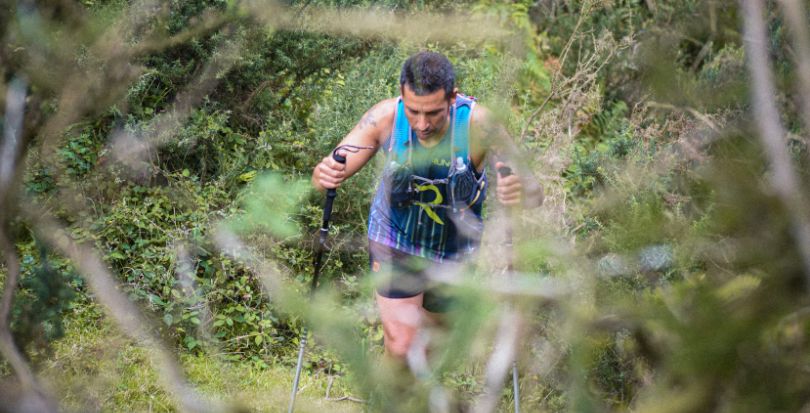
Clothing and shoes should also be used in training, so it may be very convenient to set certain sessions where we are going to use competitive clothing and footwear. In this sense, the decision will depend on personal preferences, the type of surface and the temperatures at which we are going to train and compete.
Face the uncertainty
If you are one of those mountain runners who always train in the same area or on the same routes, you should know that the fact of running in other places can help you when participating in different competitions, where it is likely that you do not know the route. Although in many occasions you prioritize the proximity, force yourself to change your training area in some occasions, trying to alternate surfaces or slopes.
In this way, we will ensure that the uncertainty caused by competing in unfamiliar areas does not affect us, in addition to teaching us how to act in case we get lost or deviate from the marked route. In the event that we train in unknown areas, it is highly recommended to use GPS or orientation devices, as well as to have the geolocation options activated in case of emergency.
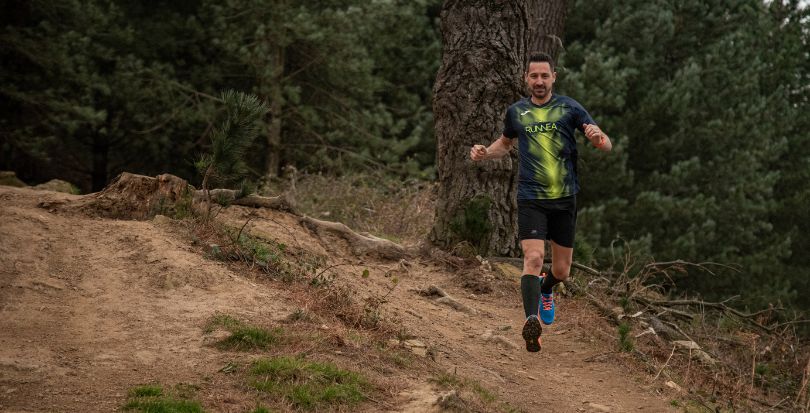
The mind also works
One of the aspects with the greatest influence on performance as the distance advances is the psychology itself. Knowing how to manage emotions and thoughts during several hours of effort is one of the challenges in middle and long distance trail running events, not to mention what can condition the runner in an ultra-distance race. Therefore, our training plan must also be able to take us out of our comfort zone, including sessions with fatigue or where we are looking for a more mental than physical training.
It is interesting to schedule sessions that simulate the conditions of the competition itself, such as training at night or facing high or low temperatures.
Success in trail running is simple, if you know how to
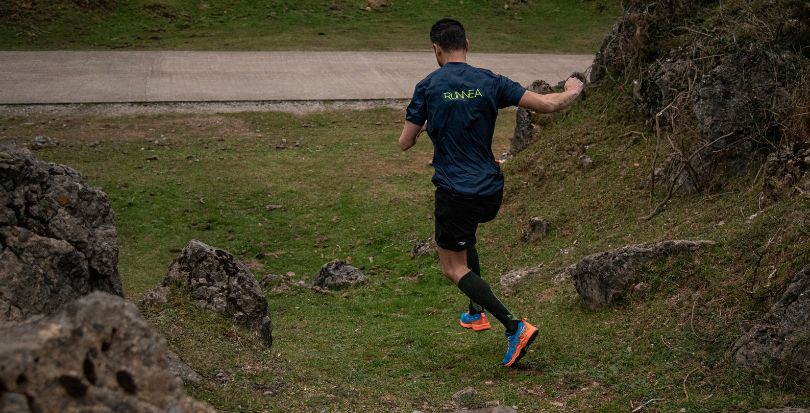
Now that you know the main keys for your trail running training plan to make you improve as a runner, you just have to keep it in mind and apply it continuously. We do not guarantee that you will win any race, but what we do guarantee is that this way you will enjoy the most and get the best version of yourself!
Read more news about: Running Training
